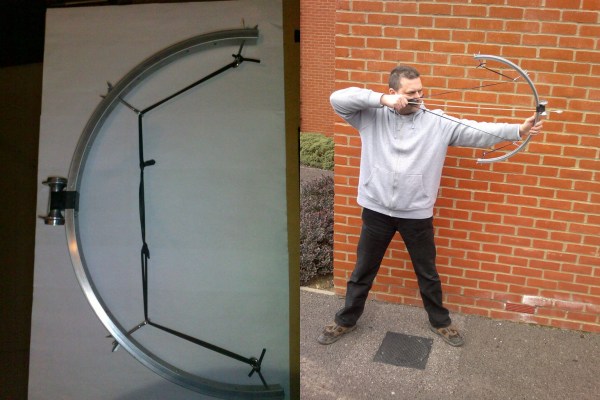Many of us dream of launching rockets from our shoulders, but [John] here actually did something about it.
This bazooka build started with a 6″ diameter PVC pipe. He mounted a length of 80/20 T-slotted aluminum extrusion to the pipe through a couple of wood blocks. [John] installed rail buttons on some Estes Alpha rockets which slide along nicely inside the T-slot. He welded a PVC cleanout fitting and plug to one end for easy access and gave her a nice paint job.
The ignition is simple: an irresistible red push button is wired to a 9V battery and a pair of alligator clips. [John] loads up a rocket, puts the gators on the wires of an igniter, pushes said button, and Bob’s your uncle. All he needs now is a pair of gun boats. Video of the build and some demonstrations we don’t necessarily recommend are after the jump.



 Last year, [Tony] was asked to develop a lasertag system with ultimate realism. This meant a system that used a blank firing replica gun, and a system to detect blank rounds being fired. Very cool,
Last year, [Tony] was asked to develop a lasertag system with ultimate realism. This meant a system that used a blank firing replica gun, and a system to detect blank rounds being fired. Very cool, 












